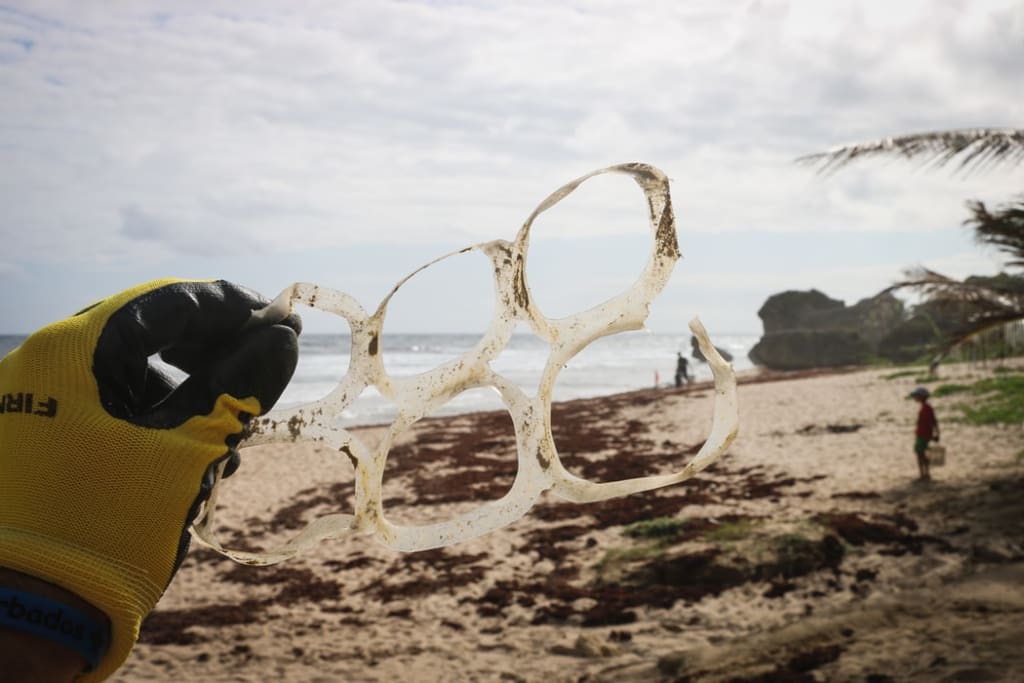Tips for Plastic Free July
How to reduce your single-use plastic consumption this month, and beyond

[This has been originally posted on ECOLOGICAL,my personal blog about environmental leadership and decision making]
What Is Plastic Free July?
Plastic Free July is a global movement to reduce single-use plastic waste. This annual event has galvanized over 120 million participants in 177 different countries. Those who partake in Plastic Free July strive to cut down their plastic use by choosing to pledge to avoid all single plastics, or just cut out the top four: plastic bags, water bottles, straws, and coffee cups.
#PlasticFreeJuly is also a social media campaign to raise awareness about the pervasive impact of plastic pollution and encourage the use of alternative products.
Some Actions You Can Take for Plastic Free July:
Take a Pledge
Make a commitment that you won’t use single-use plastic, but keep it feasible! If you’ve never cut out plastic before, don’t feel pressured to ban all plastic from your life. Try committing to no single-use plastic ziploc bags or plastic straws or plastic bags. Whatever works best for you, try that out! It’s all about effort over perfection. If you find that cutting out just one item isn’t challenging enough, try adding on another. Do what you can and feel proud that you’re even trying at all. Take the pledge to reduce your single-use plastic consumption at the Plastic Free July website.
Share a Post or Infographic on Your Social Media
One challenge I see with sustainability Instagram accounts is that we all tend to follow each other over branching out and engaging with those outside of the sustainability realm. By posting about Plastic Free July on your main Instagram account or Facebook, we can engage with our friends and acquaintances who are less versed with environmental actions.
Talk to Your Friends and Family
Don’t be preachy; this won’t get you anywhere. But opening a discourse about plastic consumption with your friends, family, and coworkers is a good way to educate those around you about the pervasive issue of single-use plastics in our society. Make a curious comment about plastic the next time you eat out with a pal. Ask them what they feel we can do as a society to reduce plastic in our everyday life. Is it our responsibility to refuse a straw and bring our own? Or should policymakers enforce ordinances that restrict businesses from providing their customers with plastic/styrofoam takeout containers?
Perform a Trash Audit
This action is a little more intense than some of the others. Performing a trash audit essentially requires you to collect all of your trash for the month, then dig through it to understand your plastic consumption trends. I have never performed a personal trash audit, only for beach cleanups. For more information on how to successfully perform a personal trash audit, feel free to visit Going Zero Waste for great instructions!
Eat In Over Take Out
Take out food is not only more expensive than eating at home, but it also produces much more waste. As much as I LOVE Thai food, ordering some red curry with tofu on Postmates comes in a plastic container, with plastic utensils and napkins, in a plastic bag. So much plastic for one meal. Instead of spending $20 on a Postmates order when you’re hungover on a Saturday, plan ahead and meal prep for the week. Your wallet and the planet will thank you (this also totally goes for getting take out for your lunch at work).
ScienceDaily has an interesting article about this topic here.
Invest in Some “Zero-Waste” Everyday Items
With a little planning and upfront investment, reducing your plastic footprint is very much possible. There are some everyday zero waste items that can greatly reduce your plastic consumption. Some items that I have invested in are: mason jars, metal water bottle, cloth grocery bags, reusable straws (thanks mom), and reusable lunch bags (thanks mom again). You don’t need bougie zero-waste items to reduce your plastic use. Metal utensils from your house work just as well as packaged bamboo ones, and a repurposed nut butter jar works great for your morning coffee.
If you want to ball out and buy some cool new sustainable products, WildMinimalist and ZeroWasteStore have some awesome items.
Pack Bulk Snacks
This is SUCH an easy transition that has saved me so much money. Instead of eating single-use snacks like Clif Bars, I have been buying snacks in the bulk section. Banana chips, trail mix, granola, and nuts make great filling and healthy snacks. Sprouts, Safeway, and Whole Foods all have lovely bulk sections! Bonus if you bring your own container to store the snacks in.
I hope you consider these tips throughout the month and explore a few of these efforts yourself! Remember—any reduction helps. Be intentional in how you live and the planet will thank you.
About the Creator
Brianna Boone
Brianna is a recent UC Berkeley graduate living in the Bay Area. She works for an environmental education nonprofit, and her passion lies with building others’ capacity to enact environmental progress.






Comments
There are no comments for this story
Be the first to respond and start the conversation.